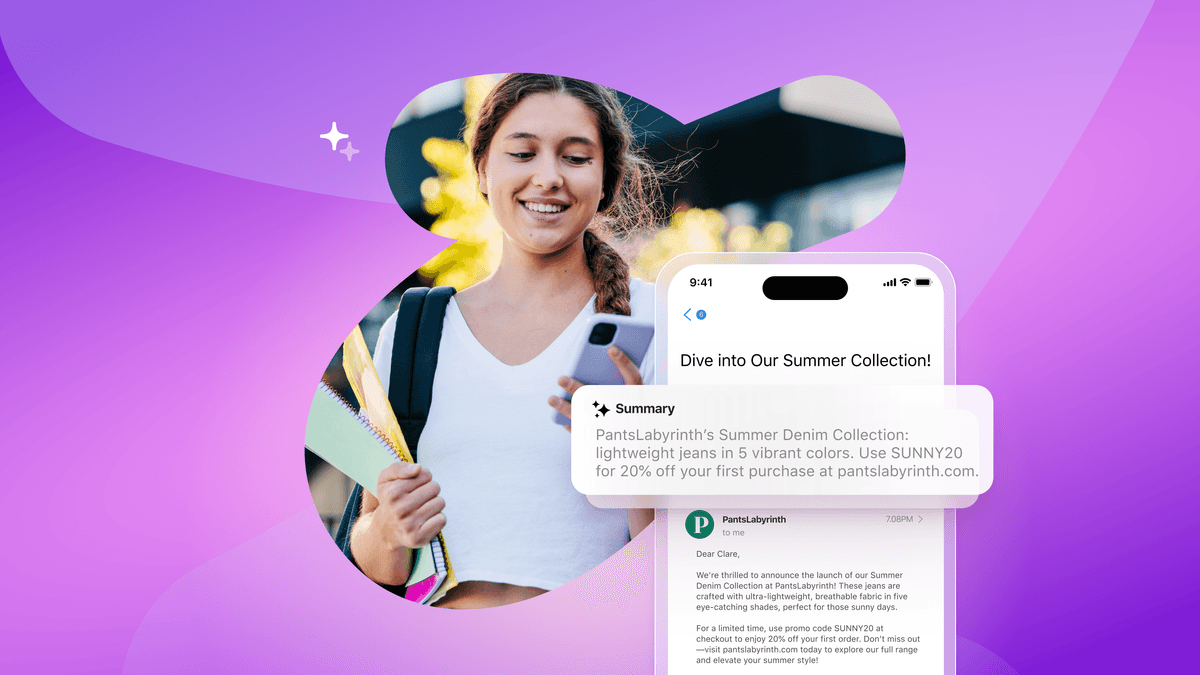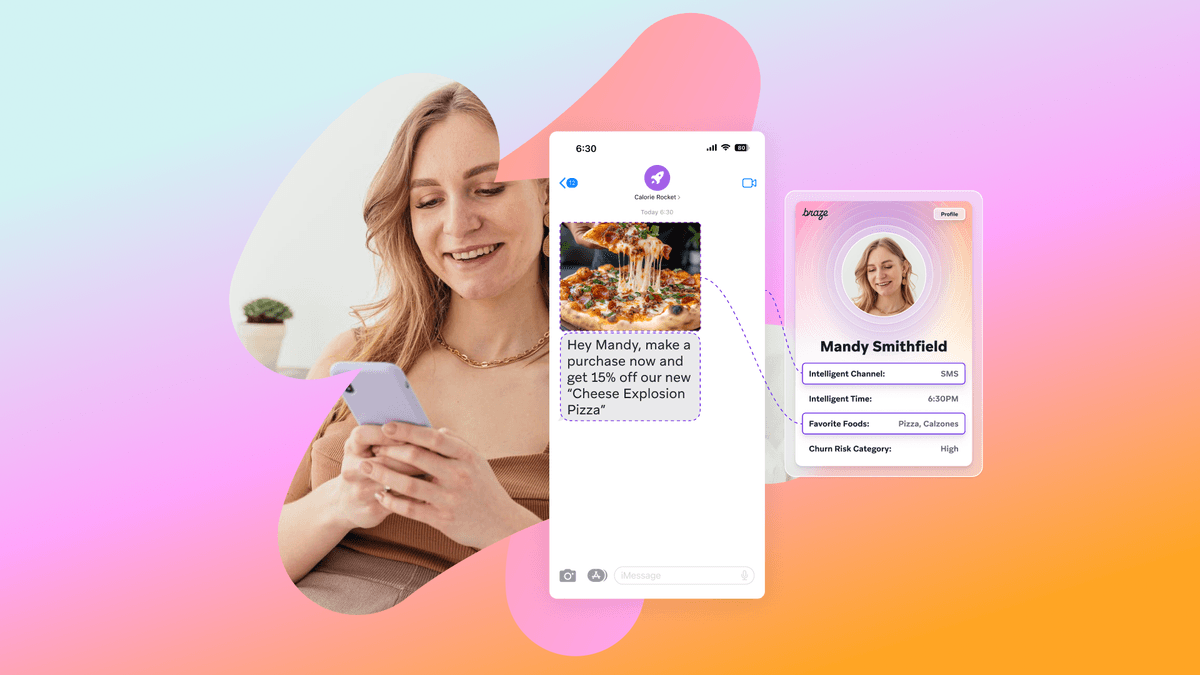The Changing Shape of Location-Based Marketing
Published on August 17, 2017/Last edited on August 17, 2017/6 min read


Todd Grennan
Content Production Principal, Content Marketing at BrazeDear reader: This blog post made its original debut in Appboy’s Relate Magazine. Pocket its pearls of wisdom, and then for more information, check out our new Cross-Channel Engagement Difference Report!
The rise of mobile has fundamentally shifted customer expectations, and that’s had a major impact on their relationships with the brands they patronize. Blast messaging and generic copy just don’t cut it anymore, now that 83% of consumers expect personalized experiences from brands. But the kinds of highly-targeted, individually customized messaging that users love rely heavily on nuanced customer data: how individuals use your app or your website, engage with your outreach, or even where they are and how they move through the world.
Smartphones and their built-in sensors have made it possible to collect customer data on an unprecedented scale, making this sort of 1:1 customer/brand experience possible and fueling the rise of location-based marketing. By taking advantage of location-related data, savvy marketing, growth, and engagement teams have been able to send more relevant campaigns and drive stronger ROI.
But when it comes to technology, nothing stays the same forever. And recent announcements from Apple and Google related to location tracking have the potential to reshape how brands use location information to engage their customers. Let’s take a look at the changes and how they’re poised to impact customer engagement:
Why Google and Apple are shaking up location-based marketing
Modern smartphones and tablets are equipped with GPS and other technologies that allow brands to collect detailed location data from mobile devices as consumers go about their day. Depending on how your brand collects location information, learning what region or city a customer lives in could just be the start. You could also gather data about specific, real-life customer movements and activity—for instance, when a customer enters a specific mall, or passes a particular aisle in one of your stores.
That’s powerful, but it can also be a little unnerving for customers—especially if they aren’t aware their information is being collected and don’t see clear benefits from sharing the information. Brands like Uber have experienced significant backlash for continuing to track user locations when their app isn’t open (even allegedly after some users had deleted Uber’s app), raising the possibility that customers could turn against location-tracking and begin opting out of providing these permissions more widely.
With more than 99.5% of all smartphones running either Android or iOS, Apple and Google have an enormous amount of power over how brands engage with customers on mobile. And this year, both tech giants have announced planned changes to their new mobile operating systems that are designed to reign in thoughtless or problematic location tracking by brands on mobile.
Apple’s iOS 11 is giving customers more control (and more transparency) when it comes to location tracking
The newest version of Apple’s flagship mobile operating system features two notable changes to location tracking that are expected to encourage brands to be more thoughtful about how and when they’re tracking their audience members’ locations.
Earlier versions of iOS allowed brands to make their users choose between two broad options when it came to granting permission to track their locations—namely, “always” or “never.” With iOS 11, all apps will be required to give their users the option to allow location tracking only when the app in question is open. That change will give customers more control over when their data is collected, while also giving them the option of dialing back location permissions, rather than opting out entirely if they have a bad experience with a particular app.
In addition, iOS devices will now begin highlighting when closed apps are actively tracking users’ locations by displaying an eye-catching blue bar and the name of the app in question while location data is being shared. While Apple has previously used icons to indicate that location data was being provided to apps, the new measures are far more clear and consistently visible. They support more transparency around location data usage, but also create the possibility that users will disable location tracking if they feel it’s being overused.
To avoid that outcome, brands should examine opportunities to use location-tracking tools—such as geofences and beacons—that don’t trigger Apple’s blue bar. And if they do make use of traditional location tracking, they can increase the chances that customers accept their use of location tracking by using in-app messages and other unobtrusive outreach channels. The onboarding process, for example, would be a great opportunity to explain the benefits and value that location data makes possible.
Google’s Android O to cap background location data requests to lengthen battery life
This year’s version of Google’s Android mobile operating system—known as Android O—includes a number of changes focused on providing Android users with more agency in connection with their devices and an improved mobile experience. These changes include time limits on background services for closed apps and the ability to select what types of push notifications they’re willing to receive from different brands. That focus on good user experiences spills over into Android O’s location-related updates, too. In particular, the newest version of the operating system places limits on how frequently a brand can request information about a user’s location while their app is closed.
The change is expected to help prolong battery life on Android phones and reduce the use of smartphone resources while apps are closed. That should make for a better Android user experience, but it will limit the amount of background location data that companies can collect—potentially impacting the effectiveness of their location-based marketing strategies.
However, like the iOS 11 change, this alteration doesn’t affect geofences, beacons, and some forms of location-based data enrichment (for instance, the enrichment carried out by location data firms PlaceIQ and Foursquare). That could potentially make these marketing tools an increasingly important part of the location-based marketing mix for brands, and diminish the importance of traditional location targeting (also known as geo-targeting) when creating and executing mobile messaging campaigns.
Final thoughts
Each year, Apple and Google’s updates to their iOS and Android mobile operating systems provide both a unique window into how these tech giants see the evolving mobile landscape. These updates help shape that landscape for billions of mobile users around the world. While these companies’ location tracking changes have the potential to have a significant impact on location-based marketing and modern customer engagement, there’s much more changing than just how iOS and Android are handling location.
For a full picture of how the digital marketing landscape is shifting, reading our recaps of Apple’s WWDC event and the Google I/O conference, or watch our spring 2017 tech briefing webinar, now available for free on demand.
Be Absolutely Engaging.™
Sign up for regular updates from Braze.
Related Content
View the Blog
How Android 16 and iOS 26 are reshaping customer engagement

Haley Trost

Introducing OfferFit by Braze: Answering burning questions

Matt Kreisher

Personalized content: Strategies for delivering 1:1 experiences at scale
